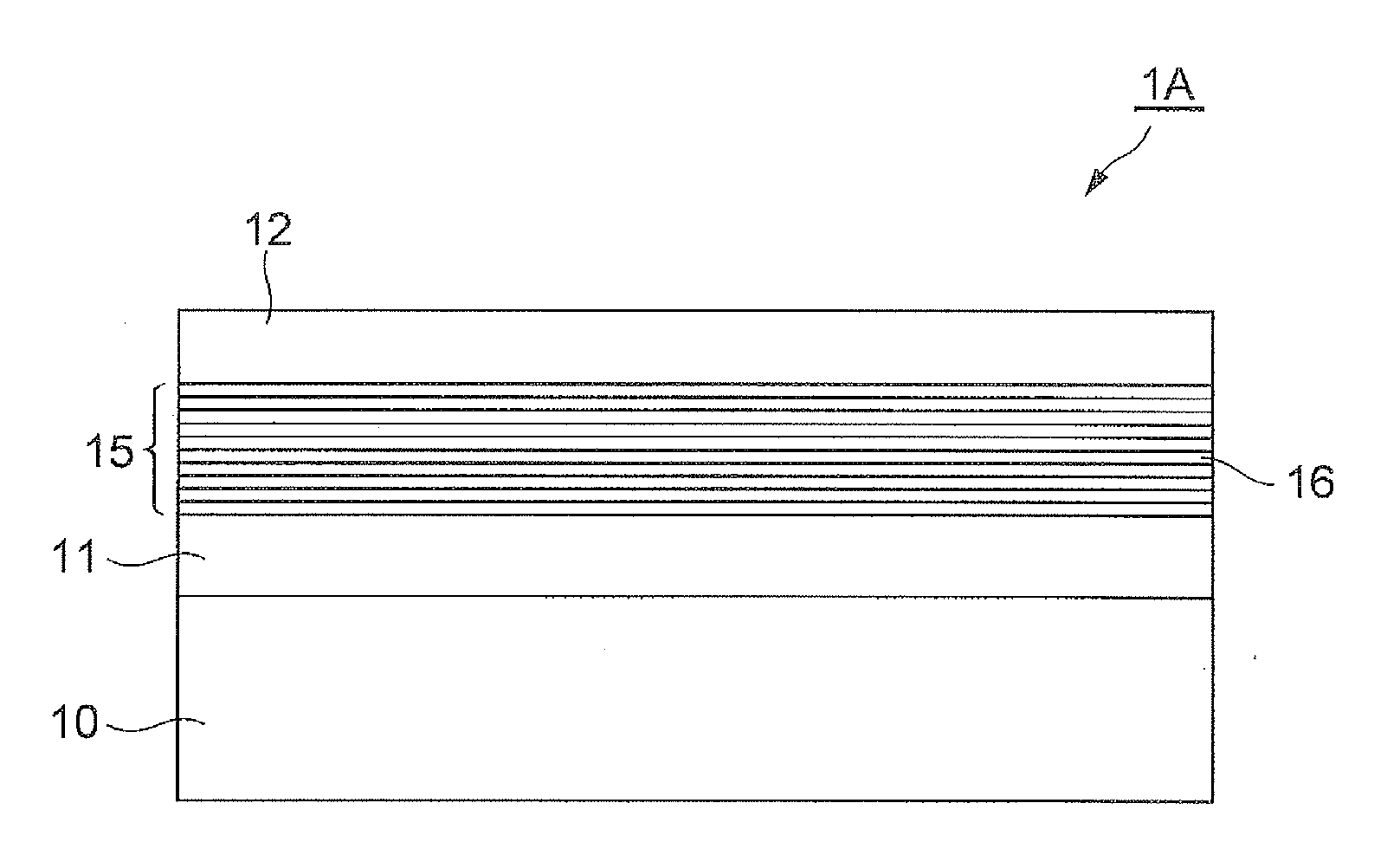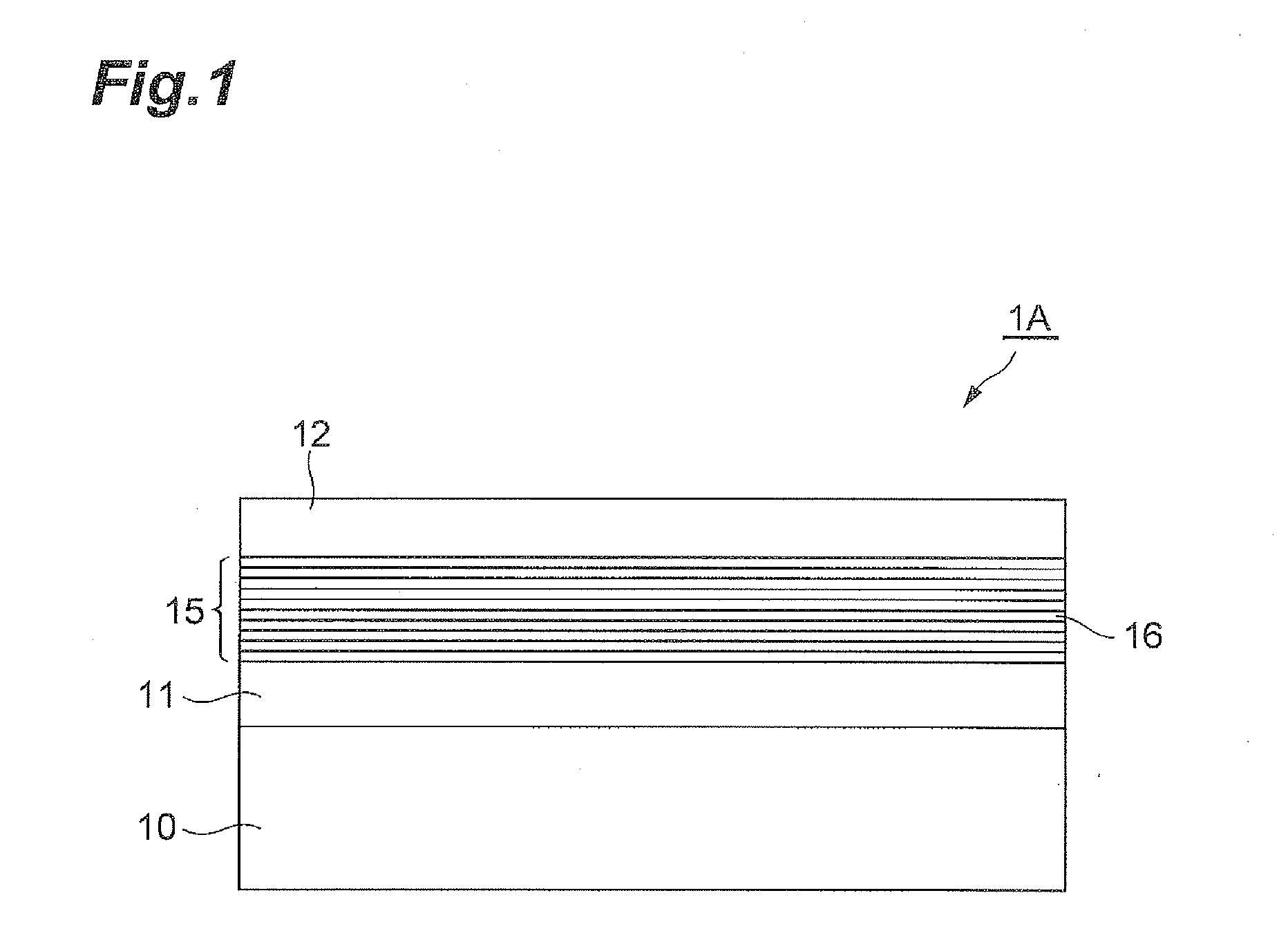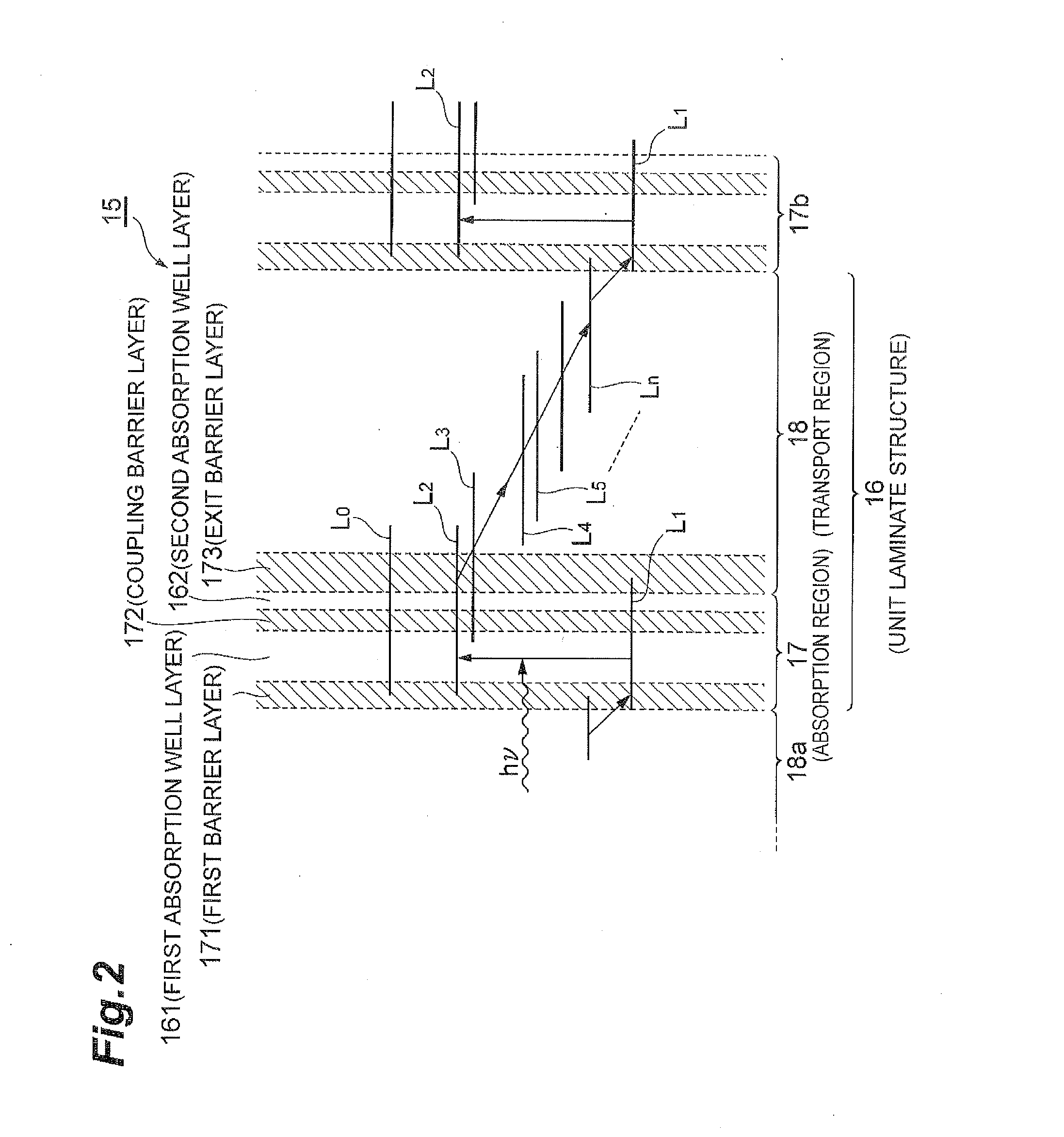Quantum cascade detector
a detector and quantum cascade technology, applied in the field of quantum cascade detectors, can solve the problems of low sensitivity, low photodetection sensitivity, and carrier transport still in an inefficient state, and achieve the effect of improving the photodetection sensitivity to incident ligh
- Summary
- Abstract
- Description
- Claims
- Application Information
AI Technical Summary
Benefits of technology
Problems solved by technology
Method used
Image
Examples
Embodiment Construction
[0027]Hereinafter, an embodiment of a quantum cascade detector according to the present invention will be described in detail with reference to the drawings. In the description of the drawings, the same components are attached with the same reference symbols, and overlapping description will be omitted. Moreover, the dimensional ratios in the drawings are not always equal to those in the description.
[0028]FIG. 1 is a diagram schematically showing an example of a basic configuration of a quantum cascade detector according to the present invention. A quantum cascade detector 1A according to the present embodiment is a photodetector that detects light by utilizing light absorption using intersubband electron excitation in a semiconductor quantum well structure. This quantum cascade detector 1A includes a semiconductor substrate 10, and an active layer 15 formed on the semiconductor substrate 10.
[0029]The active layer 15 has a cascade structure formed by alternately multistage-laminatin...
PUM
 Login to View More
Login to View More Abstract
Description
Claims
Application Information
 Login to View More
Login to View More - R&D
- Intellectual Property
- Life Sciences
- Materials
- Tech Scout
- Unparalleled Data Quality
- Higher Quality Content
- 60% Fewer Hallucinations
Browse by: Latest US Patents, China's latest patents, Technical Efficacy Thesaurus, Application Domain, Technology Topic, Popular Technical Reports.
© 2025 PatSnap. All rights reserved.Legal|Privacy policy|Modern Slavery Act Transparency Statement|Sitemap|About US| Contact US: help@patsnap.com



